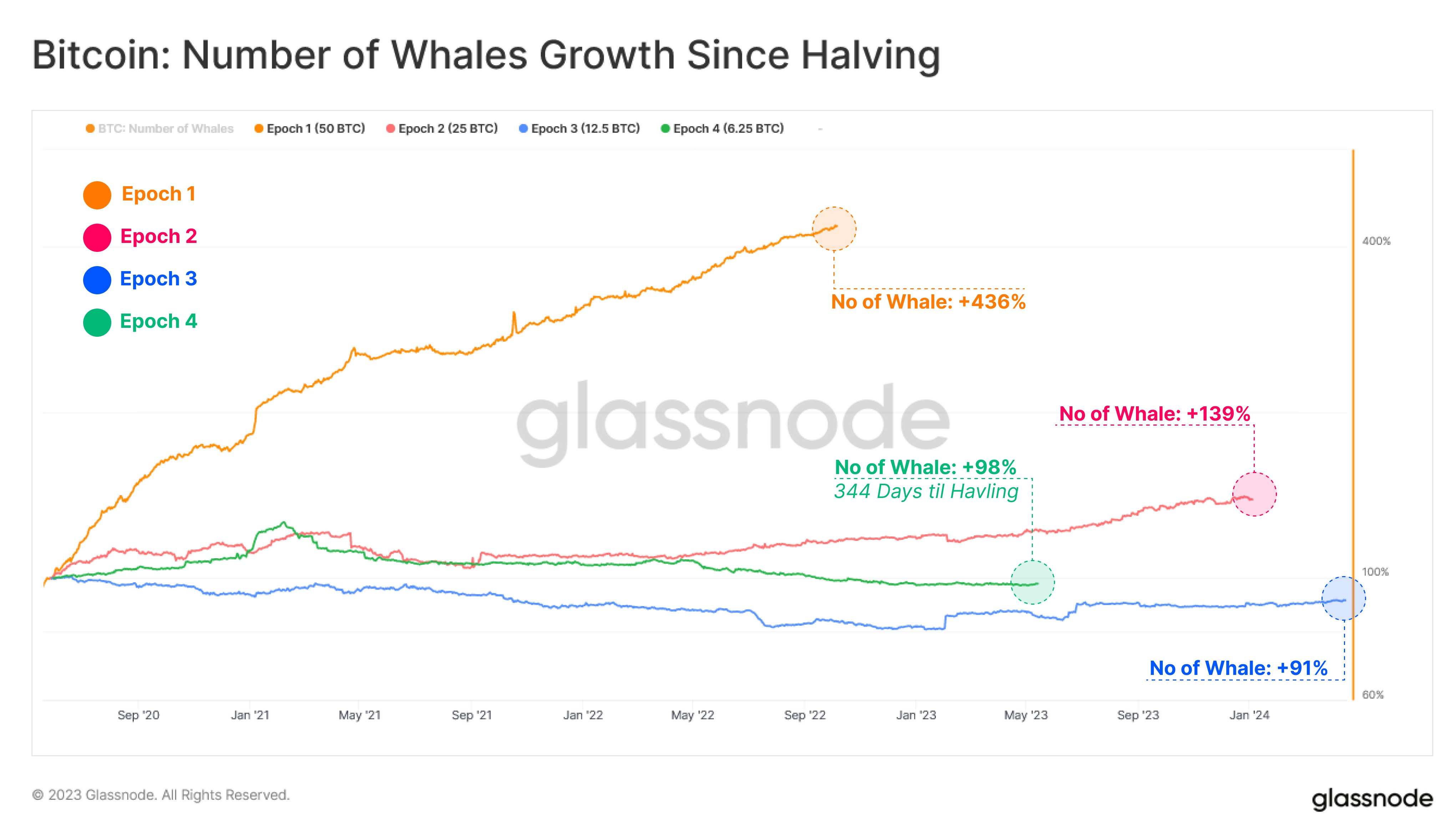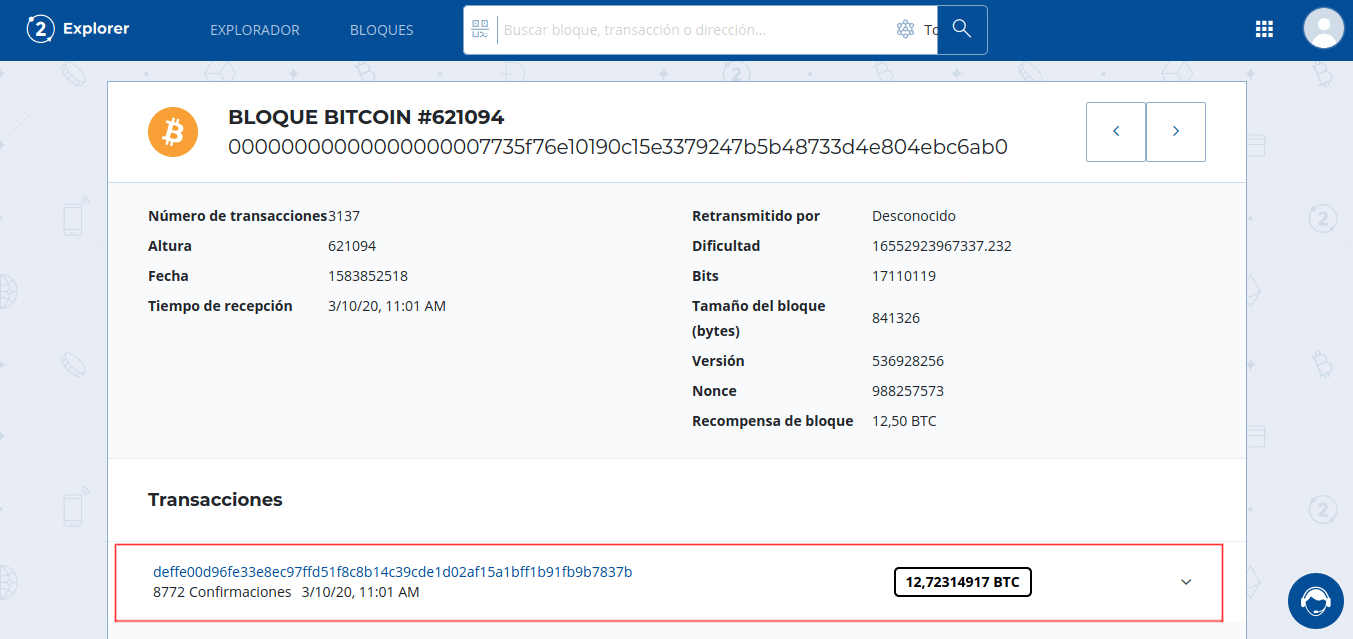Despite mining’s doldrums, miners are prioritizing the inclusion of next-generation mining rigs in their operations to prepare for the next Bitcoin halving.
Bitcoin rally will lead to “speculative blow-off top” in 2024, Mark Yusko predicts

BlackRock’s application for a spot Bitcoin ETF has kicked off the next Bitcoin bull run, which will culminate in 2024 with a speculative parabolic run, according to Morgan Creek Capital’s Mark Yusko.
Bitcoin miners raked up $184M in fees in Q2, surpassing all of 2022

It’s been one of the most lucrative quarters for those that profit from Bitcoin transaction fees in nearly two years.
Coinbase Credit lends Hut 8 $50M to support Bitcoin treasury

The loan will help Hut 8 maintain its dynamic Bitcoin treasury management strategy going into the halving, CEO Jaime Leverton said.
Will This Political Deal In The US Save Bitcoin and Crypto?
Politicians in the United States will likely strike a deal and raise the government’s $31.4 trillion debt ceiling for two more years. Amid this debate, the price of Bitcoin is firm but lower, tracking below the psychological $30,000 level as bulls recover after posting sharp losses mid-this week.
The Debt Ceiling Debate
There are reports that there will be more discretionary spending on the military and veterans with the reduction of other sectors.
Moreover, there are unconfirmed reports that the Biden administration will likely not fund the Internal Revenue Service (IRS) to boost collection, as laid out earlier.
Instead, the immediate focus will be to hire more auditors and target wealthy citizens.
There are concerns that the Treasury Department and the United States government will default on their obligation as soon as the first half of June 2023.
Even though highly unlikely, as the Treasury Department has said it will liquidate $119 billion of debt on that day, the market is watching how discussions pan out.
Bitcoin is firming up after losses on May 24.
As a deal is reportedly struck and consensus reached, politicians would once again lift the debt ceiling, sending mixed signals to the economy.
Unlike in previous years when top cryptocurrencies were decoupled from the mainstream economy, things have changed as Bitcoin’s prominence rises.
Will Bitcoin Benefit?
BTC prices will likely rally if there is an instance of default brought about by politicians disagreeing on the way forward.
On the reverse side, a deal that addresses concerns brought by the negotiating parties could signal confidence in the economy despite more debt on the table.
This averts a crisis and keeps operations running, removing uncertainty and stabilizing the economy.
In that case, the USD could strengthen, possibly reversing gains by Bitcoin bulls in the last two trading days.
Still, the crypto community remains bullish on Bitcoin considering macroeconomic events and next year’s halving.
After months of steady interest rate hikes, the United States Federal Reserve could slow down rate increments in the next meeting in mid-June. Their action could support the commodities and securities markets.
At the same time, the expected supply shock following the halving of Bitcoin miner rewards could make BTC scarcer, driving prices even higher.
Miners are special nodes tasked with confirming transactions and decentralizing the network.
If past price action can be used to predict future formations, BTC’s prospects look positive. Before the rally of 2020 to 2021, BTC prices bottomed up in 2018 and rose in 2019 before the halving event 2020.
The same pattern may be repeated through to 2024 when Bitcoin halving occurs.
Bitcoin Whales Break A Pattern Held Throughout Halving Cycles: Glassnode
On-chain data from Glassnode shows the Bitcoin whales have recently broken a pattern that was previously held through the halving cycles.
Bitcoin Whale Growth Had Previously Been Diminishing With Each Cycle
According to data from the on-chain analytics firm Glassnode, the current cycle is displaying an interesting deviation from the rule followed during the last few cycles.
Here, the cycles or the “epochs” for the cryptocurrency have been defined using the halving events. “Halvings” are periodic blockchain events that permanently cut in half the block rewards that the miners receive for solving blocks.
These events occur every time 210,000 blocks have been mined on the network, or approximately every four years. The reason they are generally selected as the start and end points for BTC cycles is that they carry profound impact on the economics of the market as the production rate of the asset is cut in half following them. This increase in the scarcity of the asset is a narrative so strong that bull runs have always followed the halving events.
The next halving is supposed to take place sometime in the first half of next year. Currently, miners receive 6.25 BTC for every block that they mine, so following this next event, they will only receive 3.125 BTC in their rewards.
Now, there have been many patterns that have held throughout the Bitcoin cycles, but one such trend looks to be breaking down with the latest epoch, as the below chart highlights.
The metric of interest here is the percentage growth that the number of whales have registered during each of the epochs. The analytics firm has defined “whales” as entities that are holding at least 1,000 BTC in their wallets.
Note that entities here don’t just refer to individual wallets, but also “a cluster of addresses that are controlled by the same network entity,” which are “estimated through advanced heuristics and Glassnode’s proprietary clustering algorithms.”
From the chart, it’s apparent that the number of whales went up by 436% in the first cycle, while they only went up by 139% in the second one. The third one saw even less growth at about 91%.
This would indicate that with each of these Bitcoin cycles, while the BTC whales had continued to increase in number, their percentage growth had been diminishing.
The current cycle, however, seems to have turned out different from these past cycles so far, as the growth in the number of whales has actually been stronger than the previous epoch this time.
Whales have grown by 98% since the start of the cycle, but it’s worth noting that there are still around 344 days to go before the next halving event. It now remains to be seen whether the indicator resumes the trend from the last epochs before the end of the current one, or if the cycle will truly end with the pattern being broken.
BTC Price
At the time of writing, Bitcoin is trading around $27,000, down 2% in the last week.
Bitcoin Block 788695: The Day Transaction Fees Took The Crown
Bitcoin, the largest cryptocurrency by market capitalization and trading volume, sets another record with Block 788695 as transactions on its blockchain network spiral out of control.
Recently, there has been an alarming rise in user transactions on the Bitcoin blockchain, leading to network traffic and congestion. This has increased miner profitability significantly as transaction fees skyrocket to control the situation.
In an interesting development witnessed by the crypto community yesterday, miners were seen to have profited highly as transaction fees contained in Block 788695 surpassed the block subsidy. This will be the second occurrence for the Bitcoin network where transaction fees contained in a block are greater than the block subsidy.
Related Reading: BRC-20 Token Standard A Hotspot For New Memecoins As PEPE Soars
Bitcoin Block 788695 Sets Another Record
According to Bitcoin mining data reports from Mempool, transaction fees contained in Block 788695 were seen to be greater than the Block subsidy. The reports show that 6.7 BTC in transaction fees were contained in Block 788695, greater than the 6.25 BTC block subsidy.

The last time this occurred was in 2017 when transaction fees contained in Block 500546 were reported to have surpassed the block subsidy. This phenomenon occurs primarily when the Bitcoin blockchain network receives exceedingly high network activity from user transactions.
Miners are seen to profit highly from these congested blocks, which contain high user transactions compared to regular blocks. They create blocks by collecting transactions from the Mempool and adding them to a block, and once the blocks are filled, it goes through complex mathematical computations. The miner who solves the math problem is rewarded with transaction fees and the block subsidy.
Related Reading: Why Is Bitcoin Down Today? Crypto Market Takes Another Hit
The block subsidy refers to the amount of new Bitcoin created or minted in each block. For each block successfully created, the miner is allowed to mint a fixed amount of new Bitcoin, which is based on the ‘current issuance rate decided by the Bitcoin protocol.’
The Bitcoin block subsidy amount is determined by an algorithm in its source code and starts at 50 BTC per block, which is split in half every four years. The split process of the block subsidy, otherwise known as BTC halving, has trickled down to 6.25 from it 50 BTC where it started and is expected to be split further in 2024.
Why Are BTC Transaction Fees On The Rise?
The jump in BTC transaction fees can be attributed to recent user activities on its blockchain network. For one, the introduction of the BRC-20 token standard on the Bitcoin network for seamlessly minting fungible tokens has gained increased popularity in the blockchain and crypto community.
The recent hype of tokens, including meme coins minted using the BRC-20 standard, has led to increased FOMO of users carrying out multiple token purchases and transactions on the Bitcoin network.
Solo Bitcoin miner defies odds to mine valid BTC block, gets $150K block reward

The act of mining a valid BTC block solo is so rare that the event has occurred only 270 times out of the 700,000 blocks produced in the last 13 years.
How the Ordinals movement will benefit the Bitcoin blockchain

The increasing popularity of Bitcoin NFTs, or Ordinals, will impact posively the security of the Bitcoin network and attract developers to the ecosystem, according to Ordinals proponent Udi Wertheimer.
What is a coinbase transaction?

A coinbase transaction is the first transaction created in each new block, and it has key features that differentiate it from other transactions.
‘Crypto summer’ likely to start in Q2 2023, Morgan Creek Capital CEO says

Bitcoin’s bull market is likely to start earlier than expected due to anticipation of the BTC halving and favorable macroeconomic conditions, according to Mark Yusko, founder and CEO of Morgan Creek Capital Management.
Bitcoin and Ethereum gave back their gains, but has anything actually changed?

Bullish crypto momentum fizzled after Fed Chair Powell poured cold water on investors’ hopes that a positive CPI report would trigger a trend change, but higher time frames remain interesting.
Is Bitcoin the only crypto that will survive FTX? | Interview with Bitcoin maximalist

Bitcoin proponent and author Jeff Booth is convinced that the crypto ecosystem will eventually collapse as a consequence of its centralization — except Bitcoin, that is.
Next Bitcoin rally to start in Q2 2023 — Mark Yusko explains why

The anticipation of the next Bitcoin halving will spark a crypto rally in 2023 regardless of the grim macroeconomic picture, according to hedge fund manager Mark Yusko.
Is Bitcoin an inflation hedge? Why BTC hasn’t faired well with peak inflation

Bitcoin’s status as an inflation hedge has come under scrutiny in the current market, but experts point toward the exceptional market conditions.
Bitcoin price predictions abound as traders focus on the next BTC halving cycle

Traders still anticipate BTC prices above $100,000, but a closer look at the BTC halving cycle chart suggests that a sharper downside move will occur first.
Bitcoin celebrates halfway to the halving with new hash rate record

The Bitcoin hash rate hit another all-time high and the 105,000th block since the last halving was mined, marking the halfway to the next halving.
Bitcoin Halving Model Suggests $24,000 Bottom Before Year’s End
Some analysts say that Bitcoin’s current price action aligns with the Bitcoin halving model, leading them to expect a $24000 bottom before year-end.
The topic of Bitcoin’s four-year halving cycle and its effects on BTC’s long-term price is one that has been highly debated within the crypto community.
Related Reading | Tether (USDT) Q1 Trading Volume Plunges To $5.3 Trillion In Quarterly Low
Crypto analysts predicted that the price of Bitcoin would reach $100,000 by 2021. However, it did not get to this level, and now analysts wonder what will happen in the next six to twelve months.
At the moment, the price of BTC is below $40,000. Many technical analysis metrics suggest that it is more likely that the price will go down further than it will recover to the $40,000 to $45,000 range. Let’s look at what analysts think about Bitcoin’s long-term prospects.
Bitcoin started the day in red with a 0.78% decline | Source: BTC/USD chart from Tradingview.com
Bitcoin Could Tumble To $24,000 By The Year-End
Crypto analyst and pseudonymous Twitter user “Wolves of Crypto” discussed the four-year cycle theory on Twitter. This theory suggests that the “most probable bear market bottom for Bitcoin will take place in November/December 2022.”
As per the projection, Bitcoin marked its highest of the last cycle by reaching $68,789 on November 10, 2021. So now, the BTC market is in the corrective phase, usually seen after the cycle top.
The analyst said;
The 200–week SMA has been the long-tested bear market bottom indicator for Bitcoin, and hence, the bottom will likely be placed at ~$24,000.
If this model is correct, we will see bitcoin break out past its all-time high sometime between August and September of 2023.
The independent market analyst Willy Woo suggested that the bottom in Bitcoin could come before the end of 2022. He mentioned, “Orange coin seems a bit undervalued here.”
Highly liquid supply shock oscillator. Source: Twitter
The “Highly Liquid Supply Shock” metric measures how much demand and supply have changed from the long-term average.
The chart above shows that when the oscillator went down to the same level as it is now, the price of Bitcoin went up shortly afterward.
He said;
Not a bad time for investors to wait for the law of mean reversion to play out.
BTC At Mid-term Low
The crypto market analyst Philip Swift has suggested that Bitcoin could be in an optimal accumulation range. The AASI or active address sentiment indicator indicates this point for the buy zone.
Related Reading | Bitcoin Struggles To Hold $40K While Crypto Track US Stocks
“The AASI is back in the green zone. This suggests that the Bitcoin price change is at a sensible level relative to active address change,” said Swift. “This tool has a good hit rate across bull and bear markets for signaling a mid-term low.”
The AASI reading is currently similar to the readings it had in the past. For example, the price of Bitcoin was low around the same time, and it increased in price a few weeks or months later.
Generally, Bitcoin is following a four-year cycle, but the increase is happening at a slower rate than expected.
Featured image from Pixabay, chart from Tradingview
Bitcoin halving analysis hints at $24K bottom before the end of 2022

Traders say BTC’s current price action aligns with the Bitcoin halving model, leading some analysts to expect a $24,000 bottom before the end of the year.
Halfway To The Halving: What This Means For Bitcoin
Bitcoin halvings are important events that have taken place since the digital asset was first launched in 2009. Since then, there have been a total of three halvings that have seen block reward cut down by half each time. The next bitcoin halving will happen in 2024 which means that the market is halfway there. As this fourth halving draws close, we take a look at how this affects the supply of BTC and in turn, the value of the cryptocurrency.
Fourth Halving Coming Up
The bitcoin halving is scheduled to happen every 210,000 blocks and the estimate for the next halving is put at May 4th, 2024, going by the current rate at which BTC is being mined. Currently, there have been a little over 19 million BTC mined, which only leaves an additional 2 million BTC that is left to be mined. With the halving cutting block reward by half, presently sitting at 6.25 BTC per block, it helps to predict the supply mechanics of the digital asset.
Related Reading | New Wallets Surge On Cardano, What’s Behind This?
With each halving, the daily issuance and supply go down. It is expected to fall even lower with the next halving, where each block reward would only be 3.125 BTC, and with the average of 144 blocks that are mined per day, the daily BTC awarded to miners on a daily basis will fall from 900 to 450. This helps to ensure that the supply of bitcoin diminishes over time, making it one of the core features of the monetary policy of the network.
How It Impacts Bitcoin
The bitcoin halving has various effects on the cryptocurrency. One of the ways where these effects are more prominent is mining difficulty. With less BTC being rewarded to miners for each block, it makes for stiffer competition, causing mining difficulty to skyrocket. This is evident in the trend that has followed the last bitcoin halving which took place in 2020. Likewise, bitcoin’s hashrate also increases as miners require more computing power to be able to mine blocks.
BTC recovers above $41,000 | Source: BTCUSD on TradingView.com
One notable thing about the current state of the network is the low fees. Even though bitcoin is halfway to another halving, transactions fees have remained near all-time lows. This is said to be the result of more efficient use of block space as there is no evidence that there is a decline in the economic usage of the network.
Related Reading | Whales Accumulate Through The Dip As Bitcoin Repositions To $40K
However, one thing has always remained consistent across all bitcoin halvings and that is the effect it has on the price. Now, halfway through to the next halvings have been when the digital asset has recorded some of its lowest prices. So there are expectations that the price will suffer at this point. Nevertheless, a halving that reduces the supply of BTC going into circulation has always been a trigger for the next bull rally and 2024 is expected to be no different.
Featured image from 99Bitcoins, chart from TradingView.com








